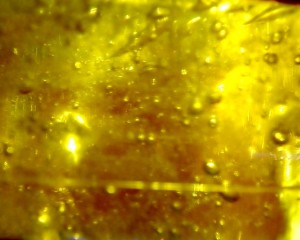 This post is geared to an elite group of readers: Men on LC (low carb) or VLCK (very low carb/ketogenic) diets who engage in moderate to heavy weightlifting on a regular basis. I’ll go a step further and assume they are concerned about boosting their testosterone levels. Testosterone after all, is a pretty important factor in muscle development.
This post is geared to an elite group of readers: Men on LC (low carb) or VLCK (very low carb/ketogenic) diets who engage in moderate to heavy weightlifting on a regular basis. I’ll go a step further and assume they are concerned about boosting their testosterone levels. Testosterone after all, is a pretty important factor in muscle development.
Prior to any research into this topic, my gut feeling was that restrictive diets – low carb in particular – would have negative consequences for testosterone. The rationale for this line of thinking is that restriction of carbohydrates would signal to the body that hard times we’re being experienced and that reproductive functions should be put on hold until more flush times returned. Since women have a greater energy investment in reproductive functions, I would expect that LC and VLCK diets to have even greater effects on female hormones, but that’s a topic for another time. It’s enough just to consider male sex hormones for now.
Let’s see what the research has to say on this matter.
The top Google search results for low carb testosterone bring up sites run by and geared to “roid boys” and muscle heads (bro scientists) [1,2,3]. And for the record, let me say some of it is damn good and quite informative. For a very succinct, straightforward and slickly presented post on this subject see the article from Testosterone Nation reference above.

Winner! Winner! Steak Dinner!
Bottom line: it doesn’t look good for testosterone levels with respect to weightlifting while eating LC and VLCK. However, there is a glimmer of hope if the carbs that are allowed, are properly timed.
In a study out of the University of North Carolina, 20 endurance athletes were divided into two groups [4]. One was put on a “low carb diet” the other on a “normal carb diet” and then put on 3 days of intensive training. Blood samples were taken over the course of the experiment and analyzed for free testosterone and cortisol. The low carb group’s diet was only defined as 30% of daily intake, which is not very low carb by most standards and the other group referred to as “control carbohydrate” was 60% of daily intake. I know some would have problems with listing carbs as a % of daily intake and not absolute amounts.
I have other problems with the diet regimens in this study.
The subjects prepared their own meals with suggestions about what to consume and kept a log of their diet. But this highlights why human subjects are difficult beasts to do diet research on. After all, you can’t keep them in a cage and feed them human chow pellets. The best you can do for human diet studies is employ a metabolic ward, but this is expensive and restrictive and as such, can only last for a relatively short study period. I often wonder why not employ prepared packaged meals much like Weight Watchers or Atkins microwave meals.
However, the most egregious is that when the subjects were at the research training facility during the training phase, they were supplemented with Polycose, which consists solely of glucose polymers derived from cornstarch, with 87.5 grams of carbs for the normal carb group. Boost High Protein Drink for the low carb group. Good lord! The ingredients in Boost High Protein Drink in order are water, sugar, corn syrup, milk protein concentrate, vegetable oil, soy protein, vitamins and minerals with 33 grams of carbohydrates, 23 grams coming from simple sugars and 45 grams of protein.
You would think in the one situation where the researchers had some control over carbohydrate intake they would have done a better job. They probably got a good deal on Boost at the local CVS. Here’s an idea: since Polycose is a powder that you mix in water why not supplement the low carb group with whatever was needed with 45g of protein powder in water?

Data Massaging FTW!
While this study is cited in the some of the roid blogs mentioned above, the results are weak in my opinion. There seems to be a general trend of lower free testosterone in the low carb group but it is not significant. There was a significant increase in cortisol levels in the low carb group, however, 24.1 vs 27.6 ug/dl. The authors resort to some statistical contortions to get a significant result for the free testosterone to cortisol level.
Nevertheless, due to these trends toward differing responses in and between the groups, an analysis of covariance (ANCOVA) was also conducted on the fTC ratio in which the initial resting Pre 1 levels of the ratio for each group were used as covariates. This alternative analysis revealed a significant group by time interaction effect for the fTC ratio change.
The authors strategically place in the abstract the dramatic result of 43% significant reduction in the free testosterone ratio to cortisol in the low carb group, using the aforementioned massaging of the data then presenting it as a percentage. In fact, these are percentages of percentages. See why percentages can be misleading. The absolute numbers are way less impressive 1.53 vs 0.82.
I’m nit-picking this study because it is the one making the most rounds from bloggers who most probably only have an abstract available and only see the 43% reduction number.

“You’re Overtraining Son.”
I did find it interesting that the researchers proposed using the free testosterone to cortisol ratio as a measure of overtraining. It would be nice to have a quantitative value for overtraining rather than subjective one of some muscle head walking by you at the gym declaring that you’re overtraining.
In another study [5] seven healthy men were first put on a high-carb and then a high-protein diet. I only have the abstract, so have no idea as to the actual composition of carbs of each diet other than total calories and fat content were kept equal in both treatments, however, absolute values are provided for the measured testosterone and cortisol. Testosterone was significantly higher after 10 days on the high carb diet than the protein diet (468 +/- 34 ng/dl) vs (371 +/- 23 ng/dl). Cortisol levels were consistently lower in the high carb group after 10 days (7.74 +/- 0.71 micrograms/dl) vs (10.6 +/- 0.4 micrograms/dl ).

Feeling Stressed Out?
The astute reader will notice besides testosterone, cortisol was measured in these studies. We all have heard of cortisol, “the stress hormone”, from mainstream media and supplement manufacturers hawking their latest “cortisol blockers.”
The research would suggest that low carb diets raise cortisol levels [6]. Cortisol in turn, has negative influence on testosterone and is why it must be discussed [7, 8].

Gotta Lift Big to Get Big
Exercise in general, temporarily raises cortisol and testosterone levels. So the goal of the bodybuilder in his training is optimize for the greatest testosterone and least cortisol release. When glycogen stores in the liver and muscles are depleted during a weightlifting session, cortisol is called upon to breakdown muscle for amino acids to create glucose and glycogen in the liver. So ideally, we want to go into the gym with as much glycogen as possible. This is the rationale behind carb-loading.
Hopefully you see where this is going for LCers and especially VLCKers. Since they’re showing up at the gym with low glycogen from the get go, cortisol will rise earlier and to a higher level during and after training in their bodies.

Testosterone = Winning!
While most of the research shows only a negative correlation between testosterone and cortisol and not a causative one, there is some evidence to suggest a causative effect [7, 8, 9]. One fascinating piece of research out of The University of Texas at Austin would suggest that cortisol not only affects testosterone levels, but also how we respond to it behaviorally [10]. Think of the ultra-competitive juicer or roid rage. Apparently, cortisol blunts the behavioral effects of testosterone.
The study looked at 57 participants in a one-on-one competition. The cortisol and testosterone levels were looked at before and after competition in both the winners and losers. The losers were given a chance at a rematch if they desired. The losers who had high-testosterone/low-cortisol all agreed to a rematch. Those with a low-testosterone/high-cortisol all declined the offer of a rematch.

You Can’t Out Flex a Hungry Tiger
The author of the UT fluff piece for the study suggests that this makes sense from an evolutionary perspective. If one is in a fight-or-flight stress situation then there is no time for such things as competitive posturing or mating behavior or in the previous study, returning to the gym. No amount of flexing out or posturing is going to save your ass from a saber-tooth tiger.
One last aspect to look at regarding low carbs and testosterone lies with the brain. The brain is constantly monitoring blood glucose levels through the hypothalamus. There is evidence to suggest that a hormone released from the hypothalamus called Gonadotropin Releasing Hormone (GnRH) is inhibited under low glucose conditions [11]. GnRH, through a cascade of biochemical events, influences the testes to produce testosterone.
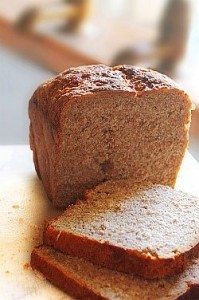
Time Your Carbs Around Your Workouts
Okay, what can LC and VLCK folks do, if anything, from being a stressed-out wimp at the gym?
The author of the post at Testosterone Nation has some excellent strategies. His name is Brad Dieter and here are his suggestions.
- Time your carbs. Low Carbers are allowed some carbs, so eat these prior to your workout. He didn’t say anything about immediately following a workout, but I would recommend consuming some carbs post-workout as well.
- Second, increase your protein content so amino acids can be used for gluconeogenesis to reduce cortisol.
- Third, use MCT oils to provide fuel for your workout and potentially reduce cortisol.

Push Away The Pie!
One final note and caution: don’t come away from this with this thinking that more carbs equals more testosterone. Excessive carb intake is associated with low testosterone [12].
Photo Credits (morguefile.com):
- Steak: kconners
- Massage: Yoel
- defeat: marykbaird
- stress: pedrojperez
- weights: cohdra
- winners: GaborfromHungary
- tiger: watchthebirdy
- bread: agathabrown
- pie: alcine
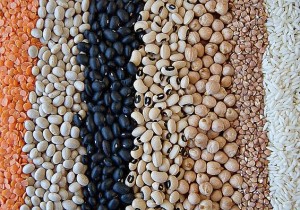 In my posts thus far, there is a character lurking in the wings. This mysterious character comes in the form of a rather simple, nondescript molecule consisting of only four carbons, eight hydrogens and two oxygen atoms. It belongs to a class of chemicals called short chain fatty acids or SCFAs. Oh, and it gives vomit its characteristic smell – gotta love Wikipedia for such facts! Give up? If you guessed butyrate, you would be correct.
In my posts thus far, there is a character lurking in the wings. This mysterious character comes in the form of a rather simple, nondescript molecule consisting of only four carbons, eight hydrogens and two oxygen atoms. It belongs to a class of chemicals called short chain fatty acids or SCFAs. Oh, and it gives vomit its characteristic smell – gotta love Wikipedia for such facts! Give up? If you guessed butyrate, you would be correct.
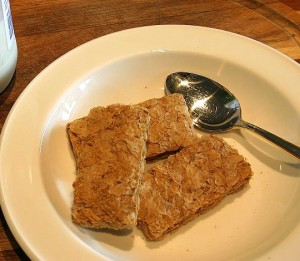

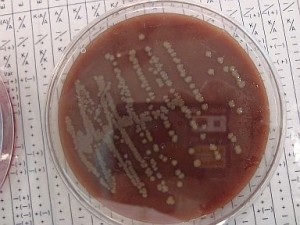 The topic of “gut bacteria” has hit the mainstream media like an outbreak of the Norwalk virus on a Paleo cruise ship. The headlines are screaming that bad gut bacteria are making us fat, insulin resistant and the cause behind metabolic syndrome. Likewise, we are hearing the panacea claims for cultivating good gut bacteria: weight loss, insulin and glucose normalization, reversal of type 2 diabetes, and more. This post will be geared towards those following a low-carb diet and will discuss the practical implications of gut microbiota with respect to weight loss and blood sugar control. A more thorough discussion of this topic can be found at the following reference [
The topic of “gut bacteria” has hit the mainstream media like an outbreak of the Norwalk virus on a Paleo cruise ship. The headlines are screaming that bad gut bacteria are making us fat, insulin resistant and the cause behind metabolic syndrome. Likewise, we are hearing the panacea claims for cultivating good gut bacteria: weight loss, insulin and glucose normalization, reversal of type 2 diabetes, and more. This post will be geared towards those following a low-carb diet and will discuss the practical implications of gut microbiota with respect to weight loss and blood sugar control. A more thorough discussion of this topic can be found at the following reference [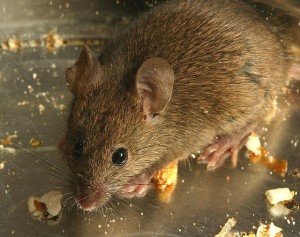




 The evolution of the Internet is perhaps one of the greatest achievements during the past twenty years. Finding information on even the most basic topics once required a trip to the public library and possibly an hour or more to flip through a card catalog followed by wandering down endless shelves of books to find what you were looking for. It might also have involved a trip to the inner sanctum of the library known as “The Reference Room” for an even deeper search of the information kept locked away behind its glass window. I still don’t know have to use the reference room at my local library, in fact, it’s been years since I’ve set foot inside a library. Not to denigrate libraries–they still are a great source of information–but so much can be found in mere seconds right on your computer or even your smart phone. The net result is we’re all becoming better informed, and in a lot of ways, just plain smarter because of this ready access to information. But as in most things–especially ones possessed of so much power–caution is advised.
The evolution of the Internet is perhaps one of the greatest achievements during the past twenty years. Finding information on even the most basic topics once required a trip to the public library and possibly an hour or more to flip through a card catalog followed by wandering down endless shelves of books to find what you were looking for. It might also have involved a trip to the inner sanctum of the library known as “The Reference Room” for an even deeper search of the information kept locked away behind its glass window. I still don’t know have to use the reference room at my local library, in fact, it’s been years since I’ve set foot inside a library. Not to denigrate libraries–they still are a great source of information–but so much can be found in mere seconds right on your computer or even your smart phone. The net result is we’re all becoming better informed, and in a lot of ways, just plain smarter because of this ready access to information. But as in most things–especially ones possessed of so much power–caution is advised.




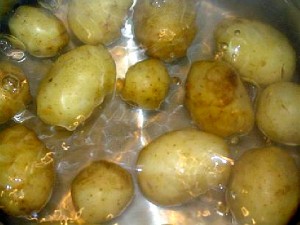 Resistant starches (RS) seem to have appeared out of nowhere in the popular press along with a lot of fanfare about their health benefits. Resistant starches are nothing new, as they’re found to some degree in all plants. Starch is the plant kingdom’s storage form of glucose and is analogous to glycogen in the animal kingdom. That is why, when digested into glucose, it can lead to the insulin spikes that low-carbers are so eager to avoid.
Resistant starches (RS) seem to have appeared out of nowhere in the popular press along with a lot of fanfare about their health benefits. Resistant starches are nothing new, as they’re found to some degree in all plants. Starch is the plant kingdom’s storage form of glucose and is analogous to glycogen in the animal kingdom. That is why, when digested into glucose, it can lead to the insulin spikes that low-carbers are so eager to avoid.



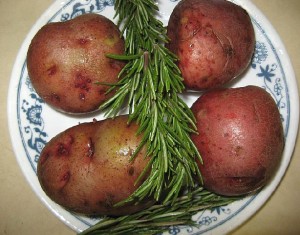
 The 2015 Dietary Guidelines Advisory Committee recently issued their
The 2015 Dietary Guidelines Advisory Committee recently issued their 
